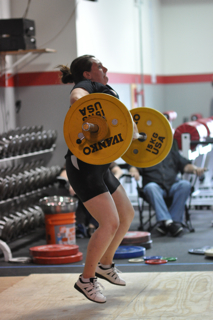 Physical Strength is an essential component in all aspects of human performance. An athlete is not going to just magically jump higher, run faster, and push harder. Any sport technique can benefit from being stronger. Even activities of daily living become more difficult in the later years of life as our physical strength weakens.
Physical Strength is an essential component in all aspects of human performance. An athlete is not going to just magically jump higher, run faster, and push harder. Any sport technique can benefit from being stronger. Even activities of daily living become more difficult in the later years of life as our physical strength weakens.
Developed properly, every person can gain significant functional benefits from strength training, such as increased bone density, improved muscle tendon and ligament strength, improved joint function, reduced potential for injury, better cholesterol, improved cardiac function, and metabolism.
If you want to get stronger, focus on the fundamental physiological principals that make a person stronger. Despite the myriad different types of strength and exercise techniques for attaining them, the laws of physiology are the same. This means the principles of attaining strength are the same for everyone regardless of what type of exercise you use! They are to achieve overload through frequency, intensity and volume.
Overload
- Frequency
- Intensity
- Volume
Overload simply means that to make gains in strength, one must continually increase the demands put on their body. There are three ways this can be done 1) increasing the frequency of exercise, 2) increasing the intensity of the exercise and 3) increasing the volume of the exercise. These variables must be manipulated according to each individuals capacity over time to bring about continued physiological adaptation. This is why most one size fits all strength programs don’t work successfully.
Frequency is the number of training sessions done each week or each day. Frequency must be balanced; training sessions that are too frequent will cause over-training, injury, or inadequate recovery. Lack of frequency will not result in a positive adaptation to the workout stress. Maintaining a level of conditioning requires less frequency than acquiring a level of conditioning.
Intensity is how difficult a training session is. It is most often measured in terms of the athlete’s heart rate. The longer one can maintain an elevated heart rate and the closer that heart rate gets to ones estimated maximal heart rate the more intense the training session. Intensity is also manipulated in terms of rest between work time and the duration of the workout. In other words, as you take shorter and shorter rest periods between your exercises, the intensity of the workout will increase. If two athletes do the same amount of work but one athlete takes 2 hours to do it while the other requires only 1 hour the second athlete is training at a higher level of intensity. The more effort required during a training session, the more difficult the training will be. If the intensity of a workout is too low, overload will not be placed on the body and adaptation will not occur. If the intensity is too high, the body will fatigue more quickly and the goals of the workout may not be met.
Volume is the total amount of resistance used in a training session. To increase strength you must progressively increase volume.[1] The volume of a workout can be calculated by multiplying the number of sets of an exercise by the amount of resistance used in each set. Here’s an example; and athlete who weighs 150 lbs performs 3 sets of 15 push-ups 150 x 15 = 2,250 2,250 X 3 = 6,750 Total Volume = 6,750
The next time you sit down and plan your upcoming workout, think about these basic physiological principals and I promise you will be on your way to becoming stronger.
![]()
[1] Baechle, T., & Earle, M. (2000). Essentials of Strength Training and Conditioning (pg 419) China: Human Kinetics




